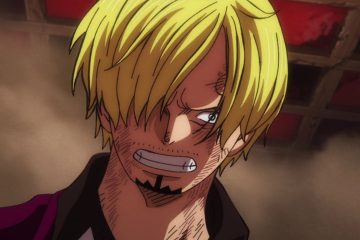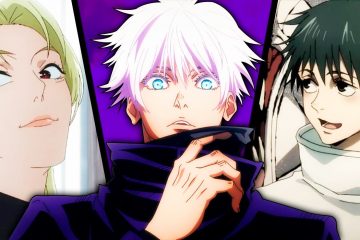Good things come in threes. The number three has a lot of good connotations in many cultures, in fact, and there is something oddly satisfying about how perfectly events tend to work in that structure. Since this is a phenomenon that is colloquially reported on in real life, it makes sense that the rule of three would find its way into popular culture. Anime is no exception to this fact and this foundational idea is most readily found in the core protagonists of shonen anime.From Naruto to Demon Slayer to My Hero Academia and more, there is a pattern to be seen that crosses secondary genre and subject matter. There is the fact that at the core of many of these lauded series live some iconic anime trios that fans can name in their sleep. There is always a certain balance to them as well; usually someone hot-headed, someone more level, and someone more cool and detached. This specific dynamic can trace its roots all the way back to the father of psychoanalysis, Freud himself. Understanding a little bit more about how this dynamic was first established can go a long way in helping lovers of anime dissect and better understand their favorite trios.The Freudian Trio is a dynamic that can be seen cross-culturally and in all forms of media. The concept comes from Freud’s structural model of the psyche and is defined by the Id, the Ego, and the Super-Ego. These three act as constructs for the basic structure of mental life and the layers of the human psyche. These three concepts work in concert and in opposition to each other as a way to create a balanced human being when controlled. The id is the arbiter of the most instinctual, primal parts of the mind and acts on a disorganized passion for the sake of immediate gratification. The super-ego acts as the critical analyst, often acting devoid of emotional consideration and in the interest of perfection. The ego is the balance between these two and often has a more realistic outlook that helps in mediating the influence of the id and the super-ego to come to a more actionable thought process. Freud made the claim that the ego, the person, is basically always trying to stay astride a horse. It is up to the rider to take its raw power and turn it into something controlled and useful in the grander scheme of things. Freud codified the model in 1923, inadvertently changing the landscape of media going forward.Jujutsu Kaisen’s Big Three Families & Their Cursed Techniques, Explained
Good things come in threes. The number three has a lot of good connotations in many cultures, in fact, and there is something oddly satisfying about how perfectly events tend to work in that structure. Since this is a phenomenon that is colloquially reported on in real life, it makes sense that the rule of three would find its way into popular culture. Anime is no exception to this fact and this foundational idea is most readily found in the core protagonists of shonen anime.
From Naruto to Demon Slayer to My Hero Academia and more, there is a pattern to be seen that crosses secondary genre and subject matter. There is the fact that at the core of many of these lauded series live some iconic anime trios that fans can name in their sleep. There is always a certain balance to them as well; usually someone hot-headed, someone more level, and someone more cool and detached. This specific dynamic can trace its roots all the way back to the father of psychoanalysis, Freud himself. Understanding a little bit more about how this dynamic was first established can go a long way in helping lovers of anime dissect and better understand their favorite trios.
The Freudian Trio is a dynamic that can be seen cross-culturally and in all forms of media. The concept comes from Freud’s structural model of the psyche and is defined by the Id, the Ego, and the Super-Ego. These three act as constructs for the basic structure of mental life and the layers of the human psyche. These three concepts work in concert and in opposition to each other as a way to create a balanced human being when controlled. The id is the arbiter of the most instinctual, primal parts of the mind and acts on a disorganized passion for the sake of immediate gratification. The super-ego acts as the critical analyst, often acting devoid of emotional consideration and in the interest of perfection. The ego is the balance between these two and often has a more realistic outlook that helps in mediating the influence of the id and the super-ego to come to a more actionable thought process. Freud made the claim that the ego, the person, is basically always trying to stay astride a horse. It is up to the rider to take its raw power and turn it into something controlled and useful in the grander scheme of things. Freud codified the model in 1923, inadvertently changing the landscape of media going forward.
#Narutos #Team #Freudian #Trios #Exploring #Complex #Character #Traits #Shonen #Anime
Note:- (Not all news on the site expresses the point of view of the site, but we transmit this news automatically and translate it through programmatic technology on the site and not from a human editor. The content is auto-generated from a syndicated feed.))



